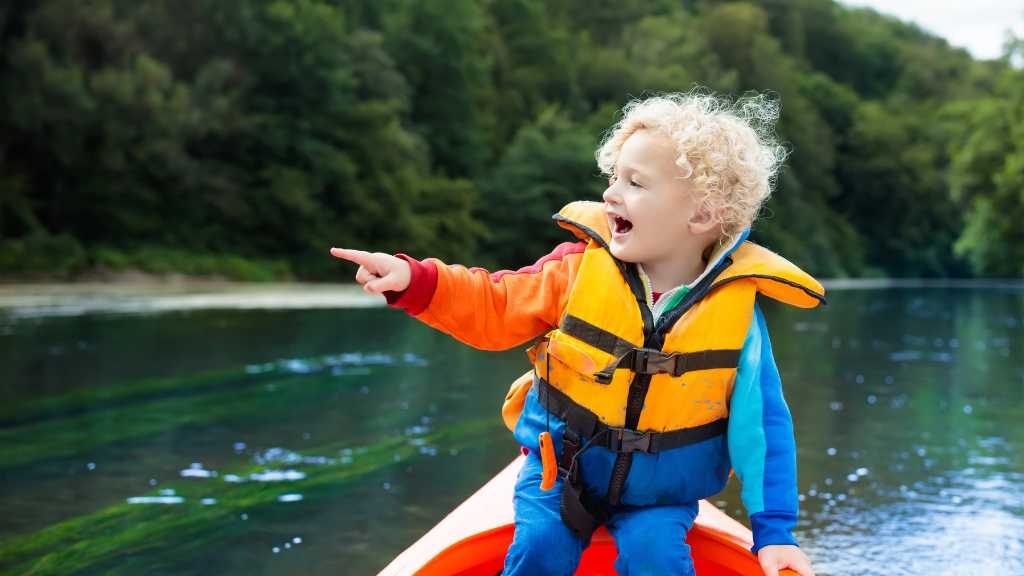Table of Contents
How can I teach water safety to a child with autism?
For many families, water activities like swimming, going to the beach, or enjoying time by the pool are hallmark moments of joy and connection. However, when it comes to autism and water safety, it is vital to address added risks.
Unfortunately, drowning ranks as the primary cause of unintentional fatalities among children with autism. With the summer season around the corner, many caregivers might be wondering: How can I teach water safety to a child with autism? The answer begins with understanding their unique needs, introducing safety concepts early, and providing consistent support.
This guide by ABA Centers of Connecticut will break down the specific risks related to autism and water safety and offer actionable strategies to keep your loved ones safe. By better understanding the challenges and implementing preventative measures, families and educators can open the door for safer and more enjoyable water experiences.
Why Autism and Water Safety Must Be a Priority
Many children with autism find water especially appealing. Whether it’s a pool, lake, or even a fountain, the sensory experience of water—its movement, sparkle, and calming qualities—can be mesmerizing. While this fascination is understandable, it can also be hazardous.
According to the National Autism Association, accidental drowning accounts for over 70% of deaths in children with autism who wander. In fact, children with autism are 160 times more likely to die from drowning than their neurotypical peers.

Sensory challenges, communication difficulties, and a limited understanding of danger amplify the risks. These factors make it imperative for caregivers to take proactive steps toward prevention and education.
These aren’t just statistics and facts. They’re heartbreaking reminders of why education around autism and water safety needs to be a community-wide priority.
National Water Safety Month: A Time for Awareness and Action
May is National Water Safety Month, a time dedicated to raising awareness around water-related risks and sharing lifesaving strategies. It’s also the perfect moment to start conversations about autism and water safety in your home, school, and local community.
For families of children with autism, National Water Safety Month isn’t just another campaign—it’s a vital opportunity to learn new tools and connect with resources tailored to your child’s unique needs. Whether you’re signing up for adapted swim lessons or reviewing emergency protocols, every step you take makes a difference.
Understanding the Challenges: Why Are Children with Autism More at Risk?
Children with autism face several unique challenges regarding water safety. By understanding these challenges, parents, caregivers, and educators can prepare and better protect their children.

- Wandering or Elopement Behavior: Nearly half of all children with autism may wander or elope from a safe environment. Many are drawn to water because of its sensory appeal, such as its shimmering light or soothing sounds, which can make it a frequent destination.
- Lack of Danger Awareness: Unlike neurotypical children, those with autism may not recognize the danger that water presents. For example, they might walk directly into deep water without hesitation.
- Communication Challenges: If a child with autism finds themselves in trouble in the water, they may lack the means to call for help or express distress, which increases the danger.
- Sensory Processing Differences: Some children may find water calming, while others find it overstimulating. Understanding how your child responds to water is key to ensuring their safety.
- Motor Coordination Issues: Many children with autism may experience difficulties with motor coordination, which can impact their ability to swim or move effectively in water. These issues may lead to challenges such as maintaining balance, floating, or coordinating their arms and legs to perform swimming strokes.
Prevention Strategies for Autism and Water Safety
Teaching water safety to a child with autism requires patience, creativity, and consistency. Here are a few practical tips:
- Use Physical Barriers and Technology: Implementing physical barriers and innovative technology for water safety at home can act as the first line of defense. For instance, install fences and self-latching gates around pools. In addition, use pool and door alarms to alert you if your child wanders toward the water, and remove tempting pool toys after use to reduce enticement.
- Provide Constant Supervision: No tool or barrier replaces the importance of active supervision. Assign a “Water Watcher,” a responsible adult dedicated to monitoring the child near water without any distractions. Programs like the YMCA’s “Phones Down, Eyes Up” campaign emphasize the need for undivided attention near water.
- Begin Early Swimming Lessons: The American Red Cross and YMCA recommend introducing swim lessons as early as possible. You can seek out adaptive swim programs tailored for children with autism. Many local organizations specialize in teaching children with sensory and communication differences.
- Teach Safety Rules: Repetition and visual supports can help with autism and water safety. Use social stories—simple, visual narratives—to teach water rules, like staying away from a pool without an adult. Use role-play scenarios to practice asking for permission before going near water as well.
- Use Identification Tools: Equip your child with ID bracelets or GPS trackers and alert neighbors if your child has a wandering tendency. Educating those in your community can create an extra layer of safety.
- Dress for Visibility: Bright-colored swimsuits and flotation devices can help make your child more visible in busy swimming areas.
- Practice in Real Settings: Whenever possible, take time to practice water safety skills in actual environments like local pools or beaches. Familiarizing your child with these settings can help reduce anxiety and build their confidence. Use these moments to reinforce key safety rules in a practical, hands-on way.
- Model Behavior: Children often learn best by observing others. Show them how to stay safe by demonstrating good behavior around water, such as following pool rules, wearing flotation devices, and remaining attentive. Your actions will leave a strong impression and set a standard for safety.
- Repeat and Reinforce: Consistency is key when teaching water safety. Review rules and skills regularly with your child and provide positive reinforcement when they follow safety protocols. Repetition helps solidify these lessons, ensuring they become second nature over time.

Empowering Autism and Water Safety with ABA Therapy
Applied Behavior Analysis (ABA) therapy can play a pivotal role in supporting autism and water safety.
ABA therapists provide individualized strategies and reinforcement techniques to teach crucial water safety behaviors such as:
- Responding to verbal cues
- Understanding boundaries
- Recognizing potential dangers around water
- Communication skills
- Healthy coping mechanisms
- Following instructions
- Reducing wandering behaviors, and more!
Additionally, during ABA sessions, therapists and caregivers can collaborate to create structured lessons that address each child’s unique needs, encouraging progress at a comfortable pace and providing the necessary techniques for caregivers to use in diverse environments.
ABA therapy, consistent practice, and patience can empower children with autism to feel more confident and secure in aquatic environments, providing families with peace of mind while fostering growth and independence.
ABA Centers of Connecticut Honors National Water Safety Month
Children with autism deserve the same joy and freedom that water can bring—but they also need our help to experience it safely. By acknowledging their unique challenges and implementing thoughtful strategies, we can reduce risk and build confidence around water.
So, as we celebrate National Water Safety Month, let’s commit to spreading the word, supporting one another, and staying vigilant. Because when it comes to autism and water safety, every moment matters.
If you’re looking for adapted resources like ABA therapy, contact ABA Centers of Connecticut at (844) 395-0448 or fill out our online form. Let’s keep our kids safe together!









